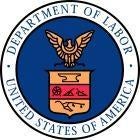Following a two-week trial, yesterday, the independent Occupational Safety and Health Review Commission handed down a decision in the Occupational Safety and Health Administration’s case against SeaWorld in Orlando, Florida. OSHA cited the company after a gruesome incident that took the life of a trainer in February, 2010. Attorneys from the Atlanta Office of the Solicitor of Labor represented OSHA.
I can scarcely imagine what it was like to witness such a scene. A crowd of park visitors helplessly watched as the life of a smart, talented, athletic young woman was snatched away in the jaws of a massive predator.
OSHA can’t have standards covering every type of hazard. So, it won’t surprise you to read that the Code of Federal Regulations does not include a specific rule about protecting workers from killer whales. That’s why Congress included Section 5(a)1 in the Occupational Safety and Health Act. Known as the General Duty clause, it states that an employer must provide a workplace that is “free from recognized hazards that are causing or are likely to cause death or serious physical harm” to employees. OSHA cited SeaWorld under this clause in the trainer’s death.
Were the risks posed by Tilikum, the 12,000 pound adult killer whale that – true to its name – killed this trainer, indeed “recognized hazards”? That was the key question facing the judge in this case.
SeaWorld argued that because its whales are so well trained, allowing workers into tanks with these whales during performances is not recognized as a hazard to the workers, and therefore nothing needs to be done to protect the workers in the future. Had the judge accepted that argument, workers would be allowed to continue to perform with the animals in these live shows with no additional safety measures in place.
Instead, however, the judge pointed out that SeaWorld’s position was belied by many, statements of its own managers, including those in charge of animal training, about the hazards its workers faced when performing with the whales. The whale involved in this case was considered an even greater threat to trainers than SeaWorld’s other killer whales. As the judge noted, “to date, killer whales have been implicated in four known human deaths worldwide. Tilikum was in the pool with the decedents for three of those deaths.”
Because OSHA’s citation was upheld, unless SeaWorld appeals the decision, it must abate the hazard and, within ten days, provide OSHA with documentation that the hazardous conditions (i.e., workers being exposed to unpredictable behavior by the animals) have been corrected. This decision also helps us address the common “careless worker” myth. Companies often argue that workplace injuries and fatalities are caused by workers doing something wrong, as opposed to being caused by hazardous conditions.
The judge affirmed that the killer whale clearly presents a recognized hazard—a fact the company denied. This inattention to obvious workplace hazards is dangerous for workers, and does nothing to lessen a company’s legal obligation to provide safe and healthful workplaces.
I can confidently say that anyone who was in Shamu Stadium on that terrible day would agree with the judge that, indeed, these animals are recognized hazards that are likely to cause death or serious physical harm. After all, this incident wasn’t the first time a worker died in the water with a killer whale.
The Labor Department’s actions in this case were carried out to achieve a single goal – protecting the workers at SeaWorld and other parks like it. The decision should send a strong message to SeaWorld that the health and safety of its workers must always be a top priority, and that workers who interact with large and unpredictable animals deserve no less protection than anyone else.
David Michaels, PhD, MPH is the Assistant Secretary of Labor for Occupational Safety and Health.


 />i
/>i
